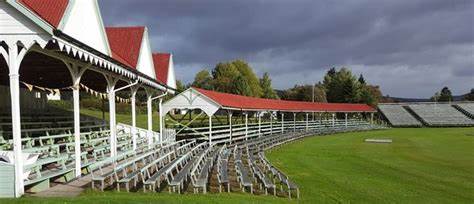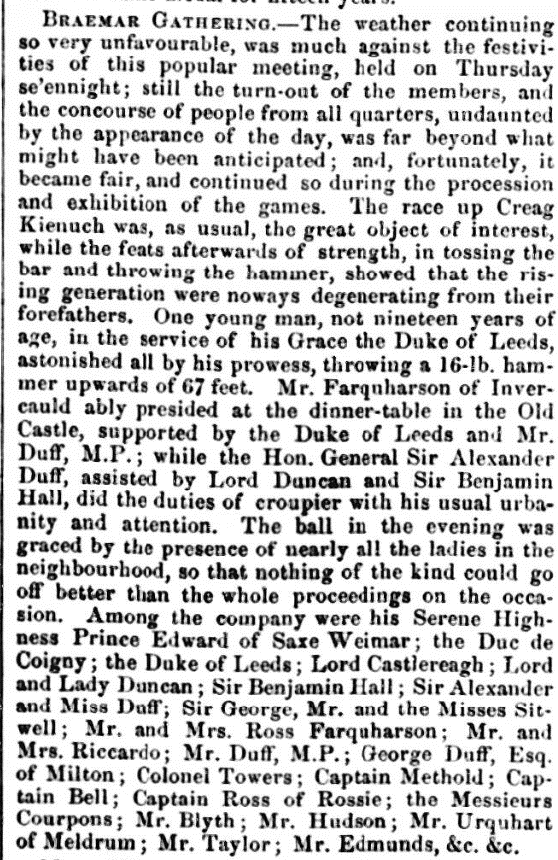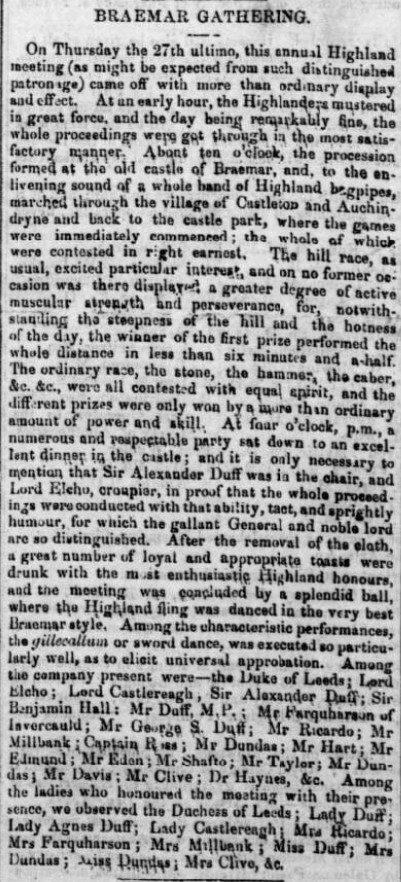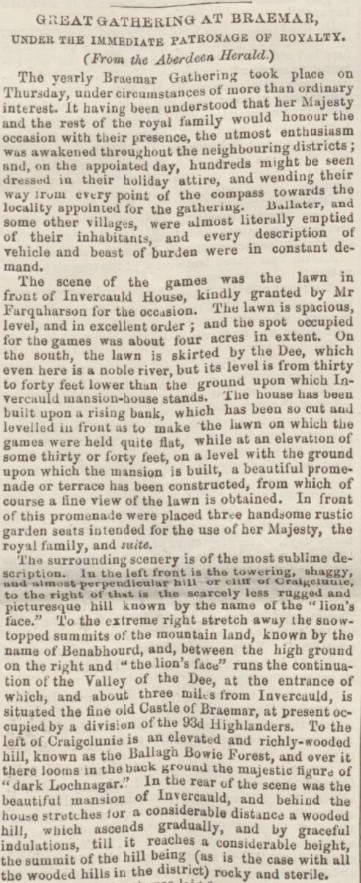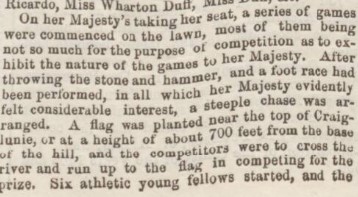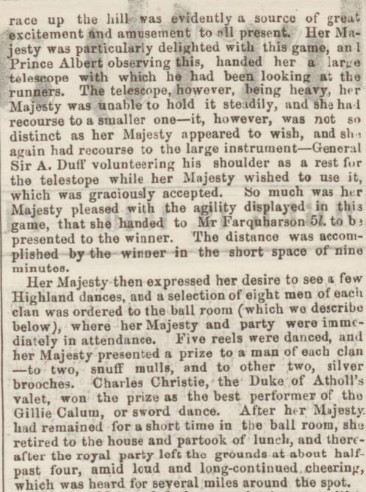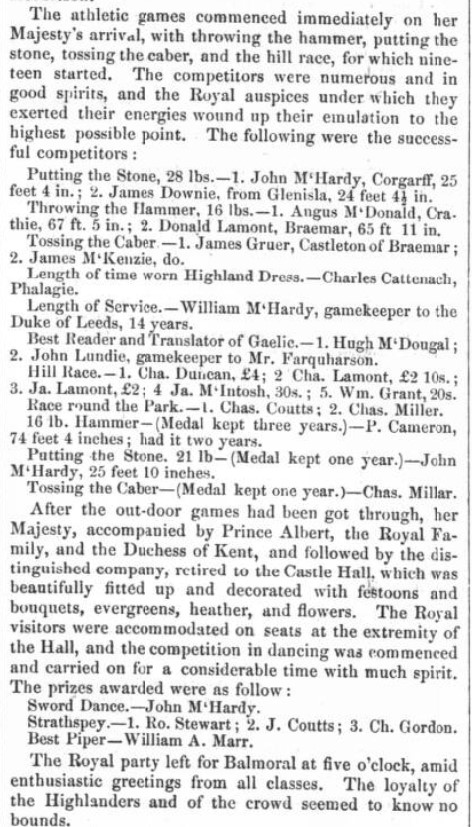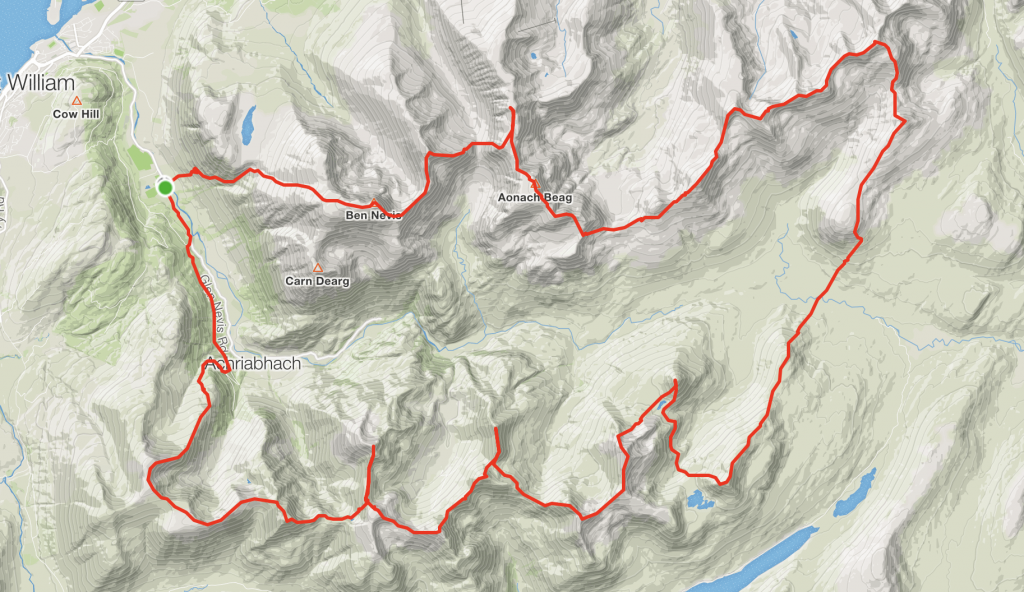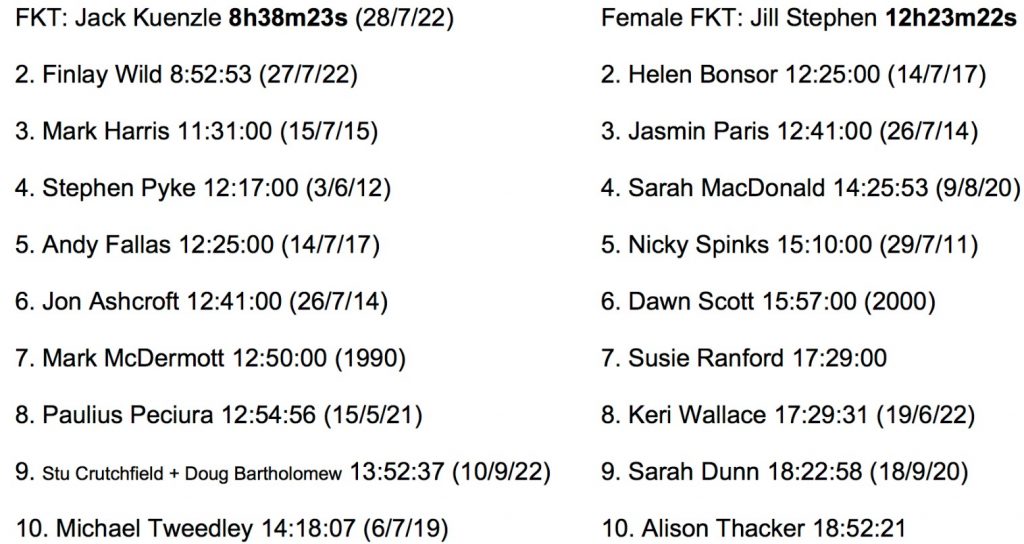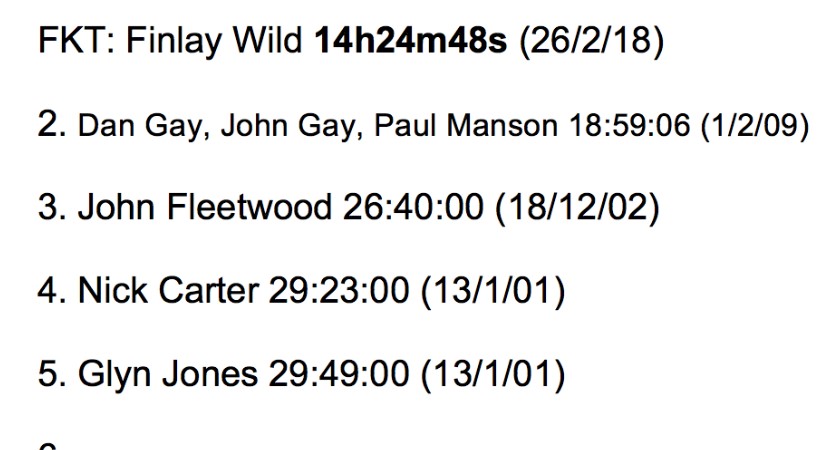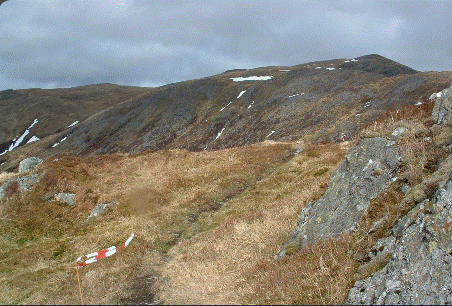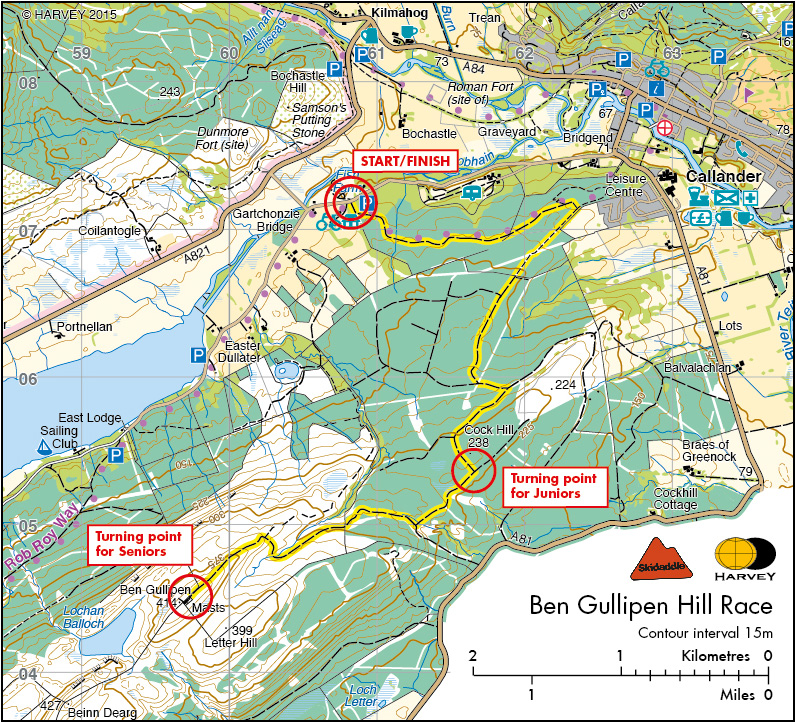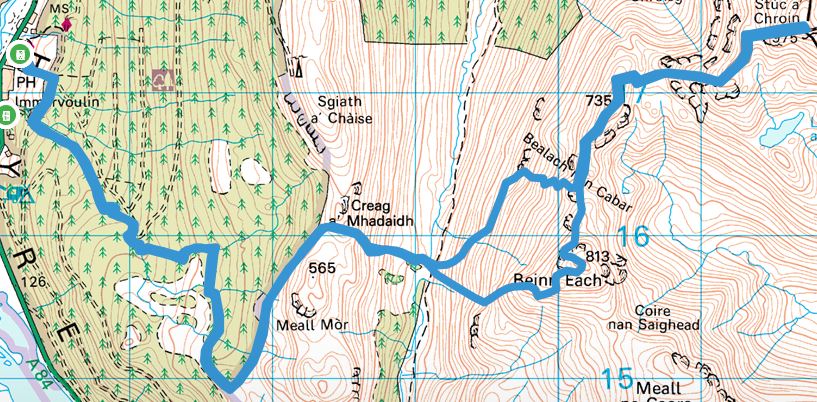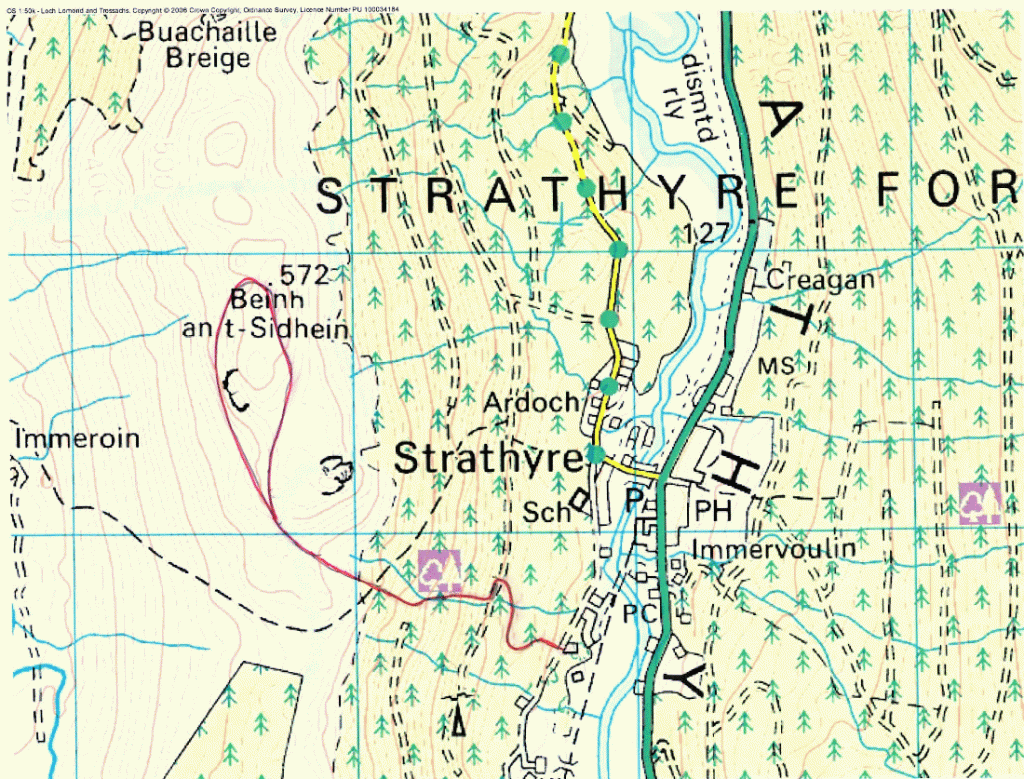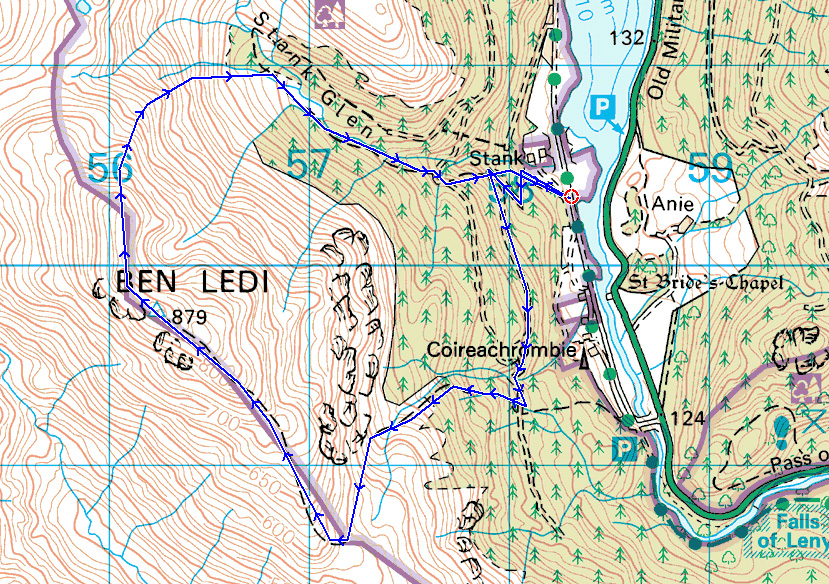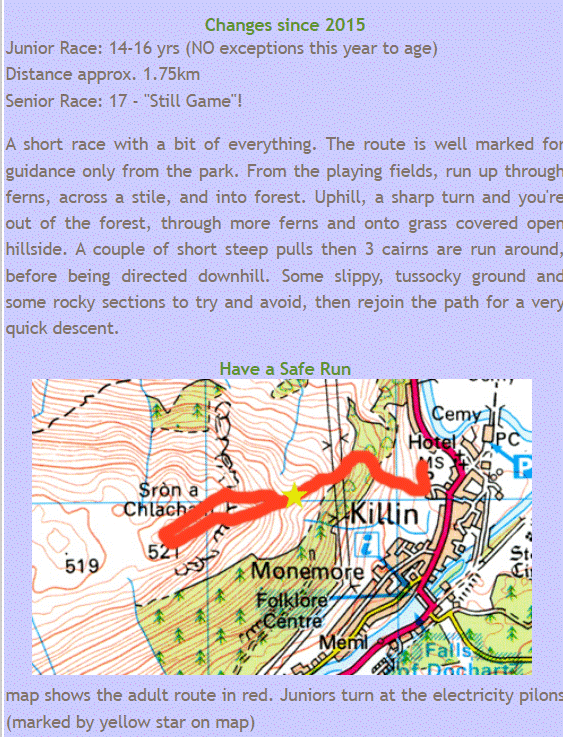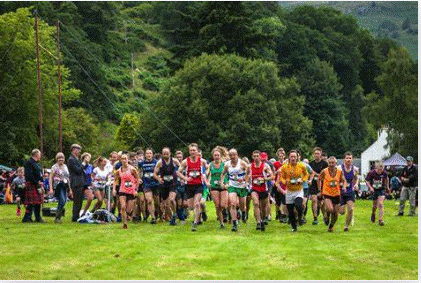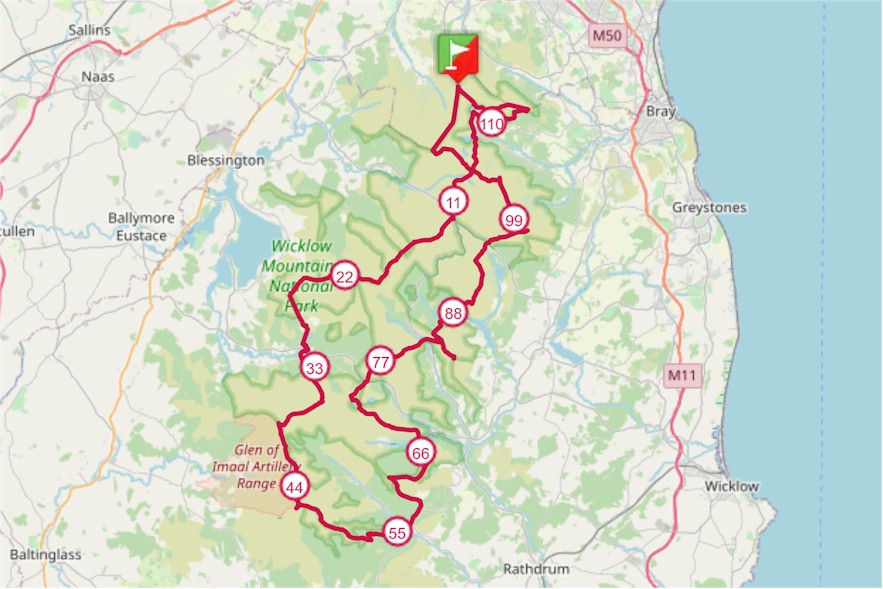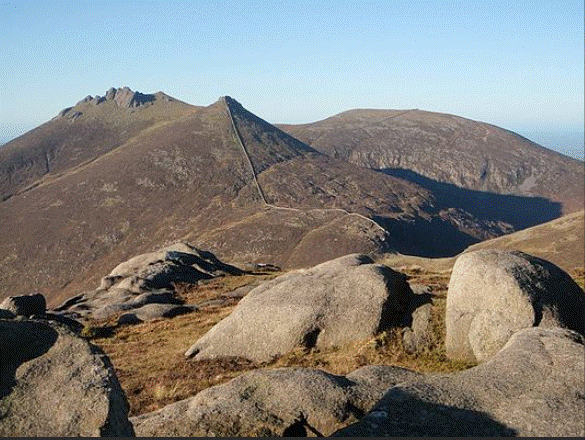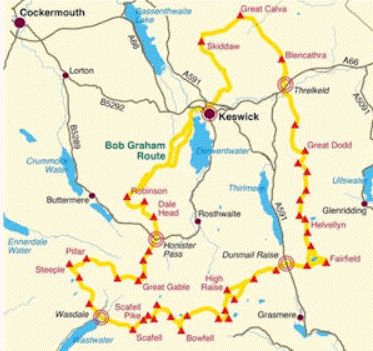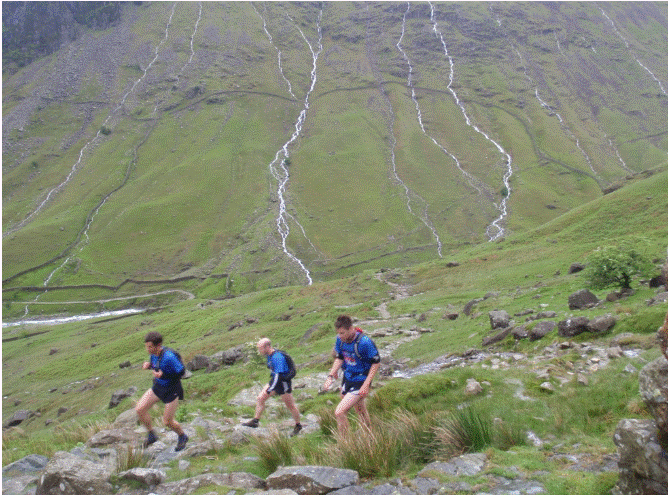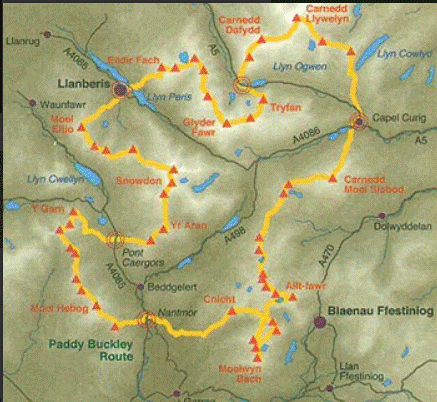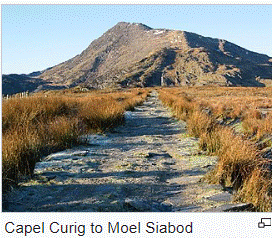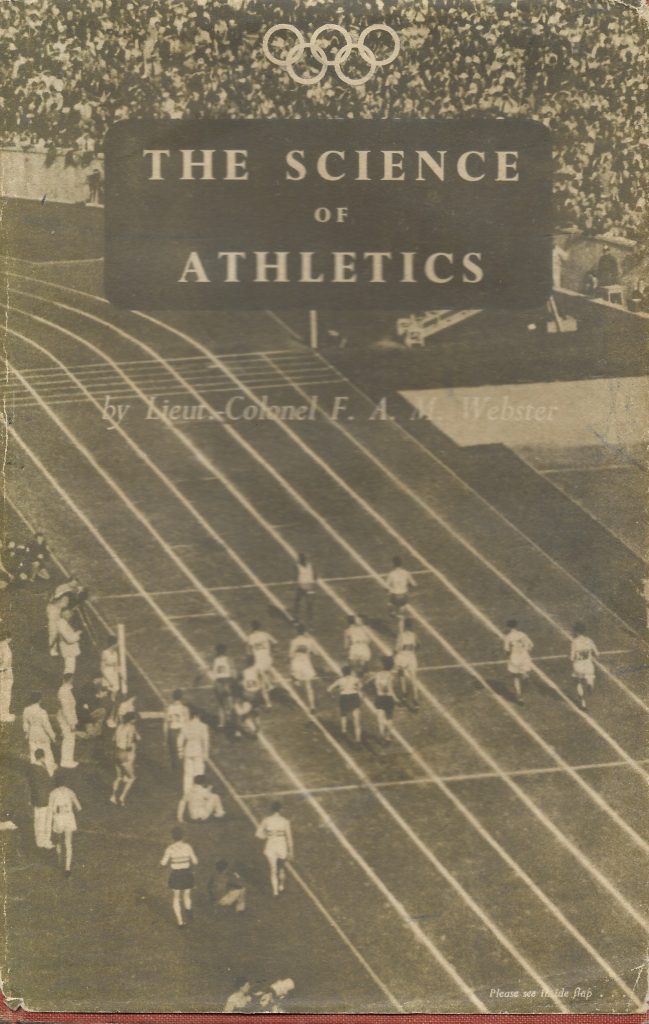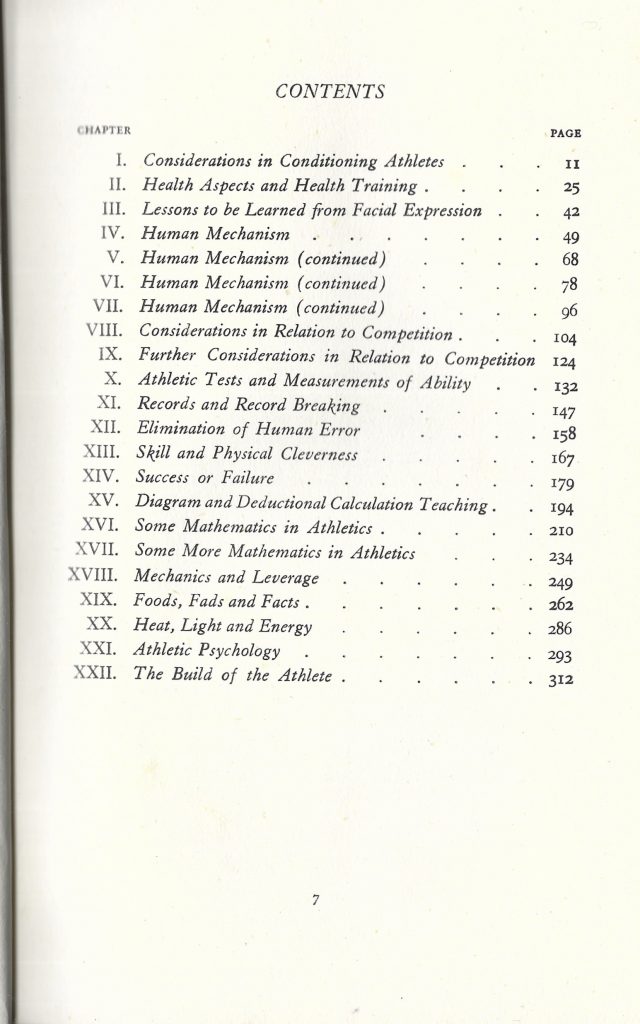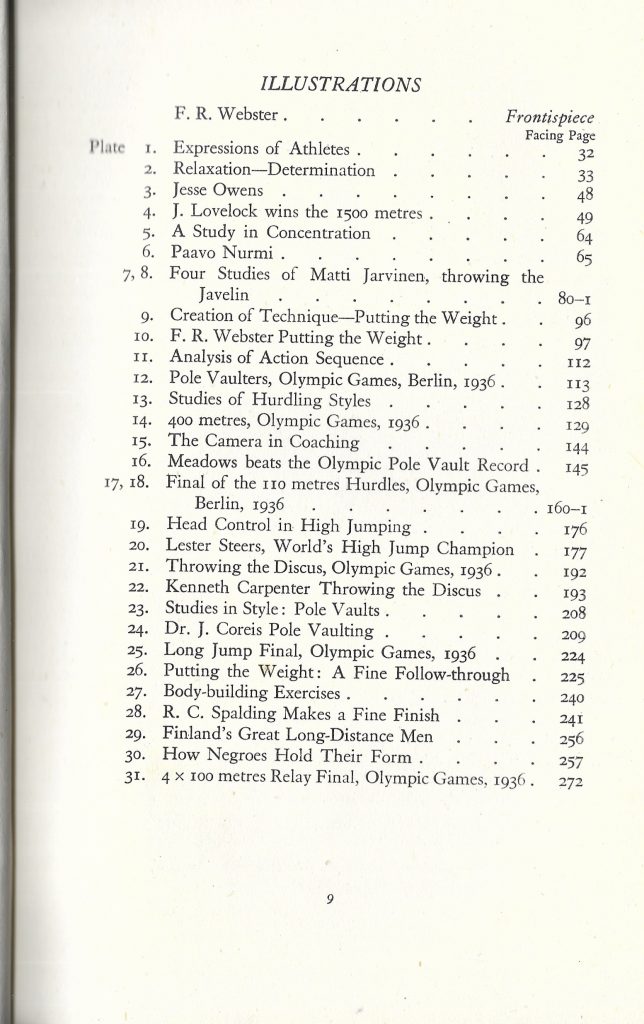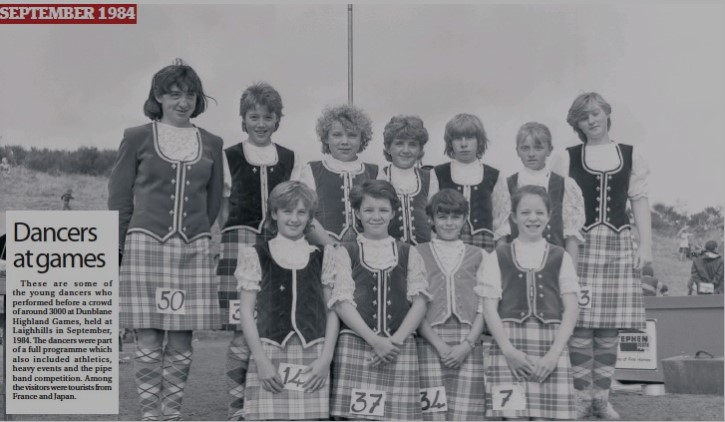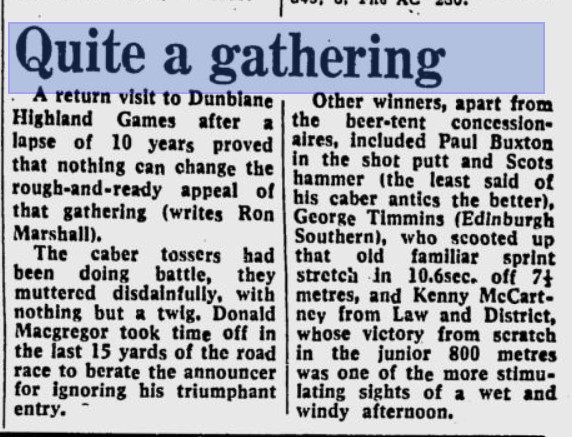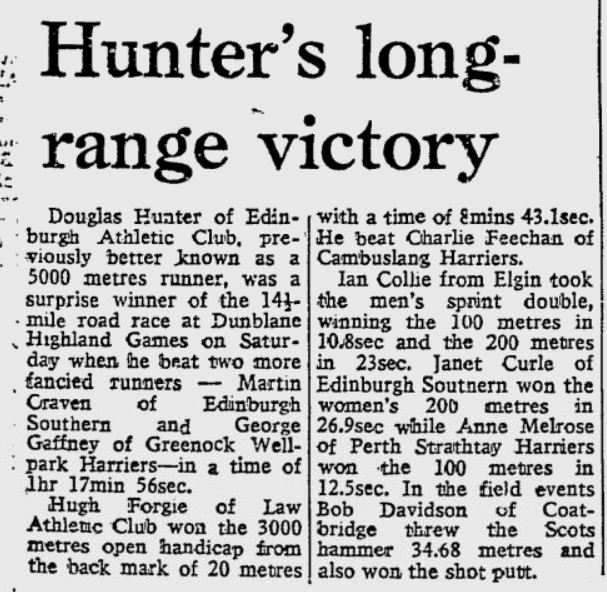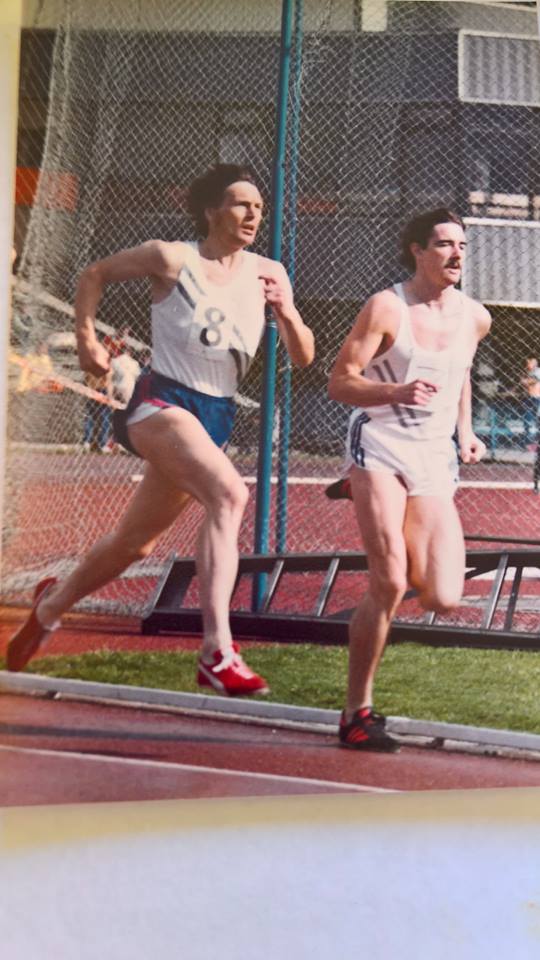
Adrian (8) following Paul Forbes
Photo courtesy Bill Blair
We were all saddened by news of the death of Adrian Weatherhead – a very talented, respected but in some ways under rated athlete. No matter the surface, road, track or country, he excelled and gained Scottish honours. His very good friend Peter Hoffmann wrote the following tribute.
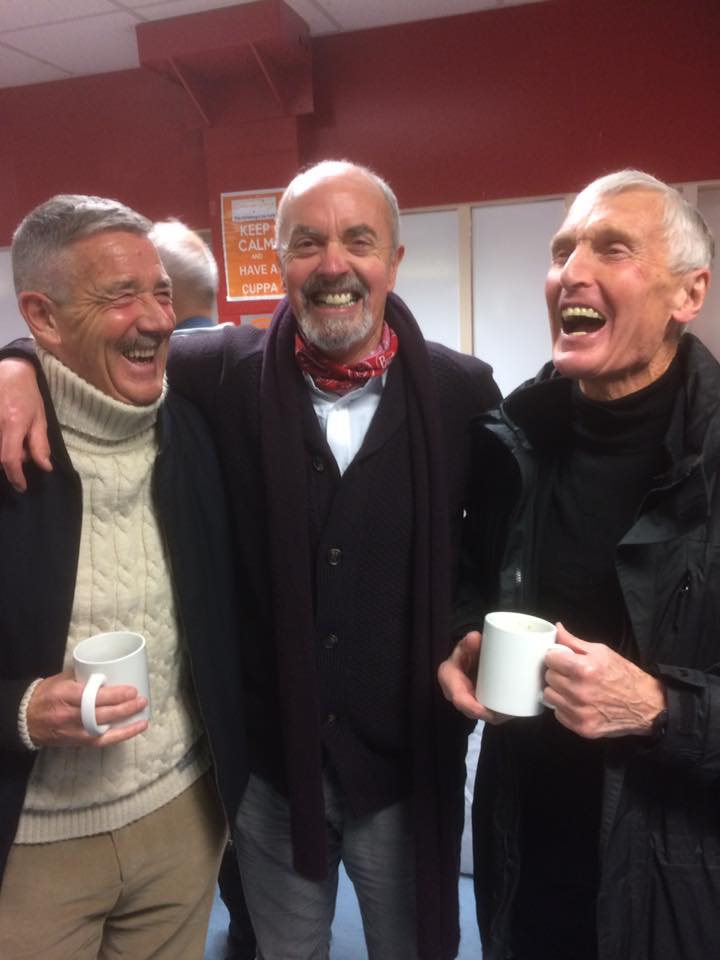
Paul Forbes, Peter Hoffmann and Adrian
TEMPUS FUGIT
Very sadly, Adrian Weatherhead died suddenly in Faro Portugal on Sunday, 9th October, 2022.
He was a very dear friend and a great mentor to Paul Forbes and me for over half a century
We loved Adrian to bits.
Since 1996 on my regular visits from the Highlands down the A9 to the capital, at the top of my to do list was to arrange for the three of us to meet up for coffee, usually at Starbucks Holy Corner.
In more recent years my elder son Will would sometimes join us as did Jack Davidson on occasion too.
I knew what our get-togethers meant to me. But when Adrian’s wife Jean telephoned me on Thursday evening with the devastating news she told me how much he looked forward to our coffees with keen anticipation, I don’t think I’d quite realised what they meant to him too.
Jean mentioned how much he liked a photograph that Will had taken of the three of us outside Starbucks. I’m glad that he did. I have one or two others from previous such occasions over the years. I’m so glad to have captured some of those moments.
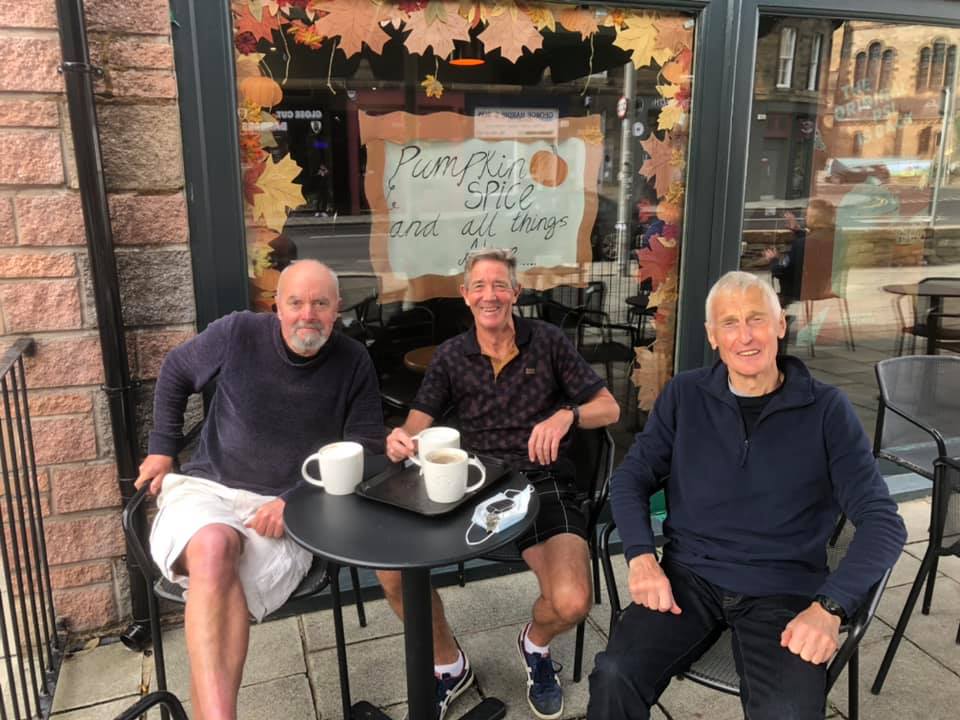
Paul and my relationship with Adrian go back 50 years.
And although in our very early years it may have been slightly different because of the 12 year age difference between us it somehow never felt like that. As Jack astutely remarked to me yesterday “He was like a 20- or 30-year-old with his cheery upbeat outgoing personality.”
When I saw him over the past summer he was as vibrant and chatty as ever making it difficult to get a word in edgeways! Over the decades it was always an absolute delight and pleasure to meet up to enjoy some great craic, laughter and fun peppered with wide-ranging conversations, not just about athletics, when we also tried to sort out the world, including that bastard Vladimir Putin!
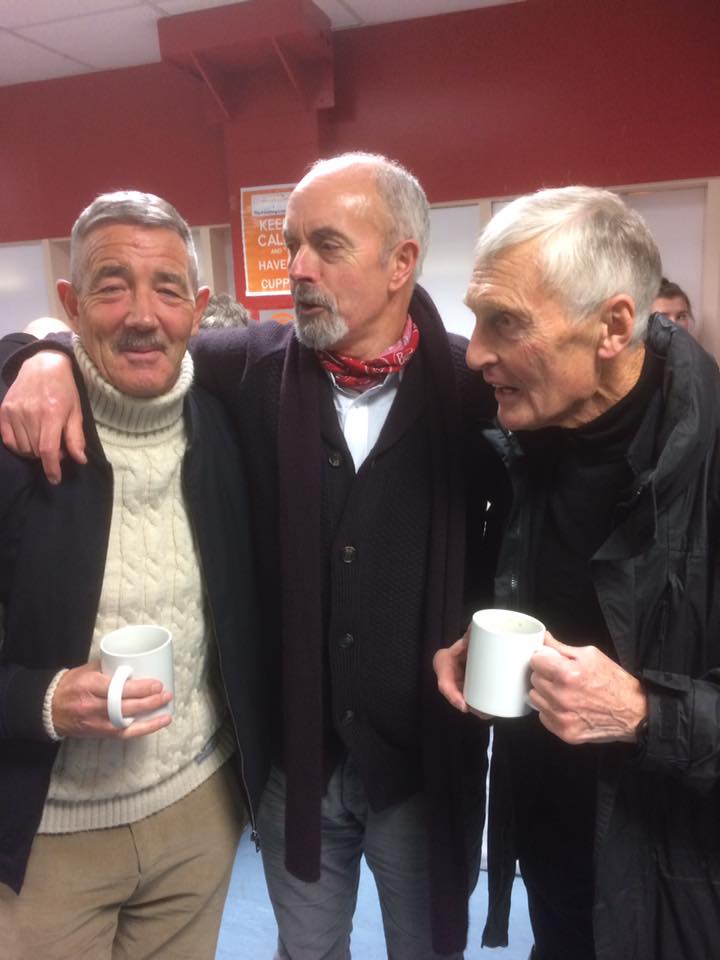
For some unknown reason lost in the mists of time I began keeping journals back at the start of 1971. Adrian crops up regularly. During the past decade it occurred to me that not everyone did the same. They went on to become the basis for several books including a few athletics books including A Life In A Day In A Year – A Postcard From Meadowbank and Audacity and Idiocy. Adrian of course features prominently in these books.
It means that from the mists of time I can conjure up some aspects of our shared lives together rather than those just based on fading memories.
Our Edinburgh based athletics training group in the 1970s met up for several years under the direction of Bill Walker. On golden autumn days; on cold winter mornings and then on warm spring and early summer weekends, we met up to train. An integral part of the group was Adrian, a sub 4 minute miler; plus GB 400 metres hurdles international Norman Gregor; World Student Games 400 metres silver medallist, Roger Jenkins and his brother David Jenkins who in 1975 was the number one quarter miler in the world – the best on the planet (and at the time a clean athlete); Paul Forbes a 1 minute 45 second half miler and 3 times Commonwealth Games athlete as well as myself a European Silver medallist and Olympian.
In the winter if we ran 6 x 500 metres each one of us led out a repetition. It was usually down to Adrian to take on the final effort. He was always the strongest athlete in the group. We trained over various distances running like the deer in efforts between 200 and 1200 metres. And if you wanted to watch us train, it was impossible to get a seat at the Meadowbank café window because so many people gathered to witness those halcyon occasions.
As an athlete Adrian was as straight as a die and as hard as nails. And despite Paul and my small successes somehow Adrian out-gunned us both with his sub 4 minute mile in 3 minutes 57 seconds. It doesn’t really come much better than having that moniker throughout your life and to be remembered by.
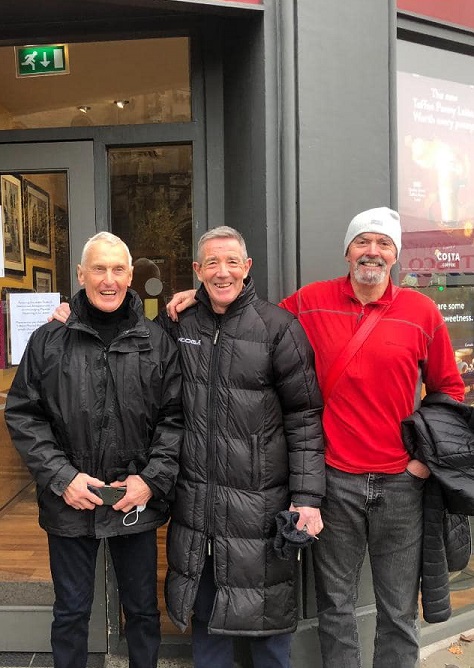
Adrian was a very modest individual. He was honest and straight talking too but in a thoughtful and kind way – a lovely balance. He openly admitted that he wasn’t a great natural talent. Indeed I think his school sports master at Stewart’s told him that he would never make it as an athlete. OOOPS! BIG MISTAKE! Adrian was the last person to say that to!
In the days when running careers were much shorter I suspect Adrian may well have been close to being the oldest sub 4 minute miler in the world. His 3 minutes 57 second mile suggested to me a man who got close to the absolute best out of himself. But that said if he hadn’t been injured in his 36th year in 1978 I wonder just how fast he could have run a mile that season. Certainly over that previous autumn, winter and spring he regularly roughed Paul and me up in training when I debuted seriously at 800 metres more or less immediately running 1 minute 46 seconds.
Meadowbank gave Paul and me a sense of acceptance and friendship within a larger community as well as within smaller groups. We were so very fortunate to find such good role models as Adrian and come under his wing as detailed in the book A Life In A Day. Here below is one extract that captures those days:
27th November 1977 I was able to join Adrian and Paul for training today. I awoke at half past eight. It was a glorious Sunday morning out – really wonderful. There wasn’t a breath of wind not even a zephyr which is most unusual for Edinburgh. The ground was hard as iron with a heavy white hoar frost covering the landscape. I collected the Sunday newspapers and took our Fox-Terrier to Portobello Park. The temperature was minus three yet it didn’t feel that cold so long as you kept on the move. The dog and I had fun trying to catch leaves as they fluttered downwards from the tree branches high up above. All things considered I ran a fair session at lunchtime but I blew up on the last run. Because of the freezing temperature we decided to half the length of the recoveries so that we didn’t get too cold hanging around in between repetitions. Afterwards the three of us ran a steady 6 miles around Craigentinny Golf Course which was closed to the golfers. It’s always a great way to finish off a Sunday. I’m enjoying some aspects of half mile training and because Adrian ensures we only do a recovery run at an easy pace there’s some great craic between us. We discuss ideas about training and racing but also talk about politics – the whole gamut and in between enjoy some good laughs too. It was one of my most enjoyable runs ever all enhanced with it being a cold still and crisp afternoon with a beautiful orange globe sun sinking into the west…
Within a few years Paul and I started to get picked for Scottish international teams and then British teams too. In 1974 Adrian was our sole track victor over 1500 metres in Oslo Norway. Over the next four years we regularly flew together to such destinations as Munich; Athens; Dresden; Nice etc, and our friendship grew. And on occasion when he couldn’t run because of injury he might put a stopwatch on us in training proffering some excellent advice too.
When you share a life together throughout the four seasons of the year training in all weathers you get to know a person pretty well. Adrian was someone you could absolutely depend and bank upon.
13th January 1979 Last night was the coldest ever recorded temperature in Edinburgh – minus 27 degrees. Adrian and Ross Nicol and I ran a track session after the rescheduled New Year Sprint. It was the coldest I’ve ever run in and as in the cartoons my hands had gone stiff with the extreme temperature.
We enjoyed some funny moments too. When I lived in London, Adrian and Paul stayed overnight with me for the AAAs Championships. I record:
13th July 1979 Paul and Adrian came back to the flat. Paul and I sat up chatting into the wee sma’ hours. 3:30 a.m. – terrible! Somebody’s alarm went off and Adrian didn’t know what the fuck had hit him! Trust Paul and me to see the funny side of it!
Adrian was a regular figure to be seen during the working week gliding around The Meadows each lunchtime. You could set your clock by him. I regularly used to join him there on a couple of occasions each week. Sometimes I was amused at how some pretty solid athletes joined us but usually after only a few minutes thereafter disappeared off into the distance because we were running too slowly!
Adrian’s training philosophy was that too many athletes at that time did their aerobic running far too quickly and their track sessions far too slowly. His regular thrice-weekly track sessions were hard hard efforts – pretty tough sessions whereas everything in-between was easy.
Despite his high-stepping style akin to a thoroughbred horse which wasn’t best suited to cross-country running, when he turned out for what was his annual venture over the country at the Scottish Championships in the early 1970s on three occasions he finished an astonishing second in a race six times his specialist distance leaving the afore-mentioned fellow Meadows athletes in the dust!
The brilliant Andy McKean said that when he looked round nervously at Adrian prancing over the muddy ground not far behind him it gave him a fright. I actually believe his best chance to win the championship was in 1972 on his local course when the ground was crisp and flattish but he instead chose to run indoors for Great Britain in San Sebastian Spain. In later years when I asked him if he regretted that decision he told me in atypical straight-talking terms Not at all Pete – my preference would always be to race for Britain. As for me I’d have raced at Riccarton!
In the very early days when Paul and I first ventured down to Meadowbank Adrian often trained with the great professional miler Jimmy Gray. They put in some fearsome sessions together. But Adrian was no fan of the other code. In later years if we met for lunch and the topic came up he was pretty outspoken about some of the shenanigans that went on with some of the bookies and other controlling voices. But he had a deep respect for Jimmy and warmed to the likes of Freddy Bell too who was a wonderful character in his own right.
Throughout his long life Adrian remained incredibly fit. After he retired he kept to an almost identical pattern of training, day in, day out.
By the early 1990s he did his standard middle distance sessions up at Campbell Park, Colinton, a stone’s throw from where I lived. We had a lovely wee arrangement whereby we never contacted each other but knew the days and the likely times when he would be there. As in days of old we enjoyed those companionable sessions in each other’s company particularly in the warm-ups and the warm downs when we could talk and bore for Scotland! Adrian remained as fit as a butcher’s dug. And whilst I was less so, with my speed we were pretty eaksy-peaksy making for lots of fun on the springy grass throughout the 4 seasons of the year. Sweet memories.
Another astonishing dimension to Adrian was that when he hit 40 he refused to be classified as a veteran. Atypically he decided to try out some occasional road racing. He was quite brilliant at that too, winning races against athletes half his age. And so that it wouldn’t get too much in the way of his Saturday and his training he turned out for Edinburgh Athletic Club on the first leg of the famous Edinburgh-Glasgow Road Race usually handing over in first place. He then went out and ran a couple of Grangemouth Round the Houses Road 10k road races in approximately 29 minutes, possibly close to the existing World Veteran’s records at the time, not that he was interested in them.
But as to his legendary grit! I recall him telling one astonished well-kent local athletics coach that you had to be prepared to die if you wished to maximise your ability at middle distance running! Paul and I were in awe of this aspect of Adrian but equally so his incredible self-discipline.
Our Campbell Park sessions came to an end in 1996 just before I moved to the Highlands when Adrian was getting cramps during sessions in his thigh. Most unfortunately it turned out to be a blockage in an artery. When he received the bad news he jettisoned the likes of cheese and chocolate from his diet. And in that respect he had the discipline to remain below his racing weight and the ascetic qualities and sensibilities of a monk, not that he was religious, indeed quite the opposite.
Into old age he followed the spirit and approach to life as exuded in Tennyson’s great poem:
Ulysses
’Tis not too late to seek a newer world.
Push off, and sitting well in order smite
The sounding furrows; for my purpose holds
To sail beyond the sunset, and the baths
Of all the western stars, until I die.
It may be that the gulfs will wash us down:
It may be we shall touch the Happy Isles,
And see the great Achilles, whom we knew.
Tho’ much is taken, much abides; and tho’
We are not now that strength which in old days
Moved earth and heaven, that which we are, we are;
One equal temper of heroic hearts,
Made weak by time and fate, but strong in will
To strive, to seek, to find, and not to yield …
Alfred, Lord Tennyson
If he was free my son Will loved to join Adrian, Paul and me for our coffees. Like Jack he warmed to Adrian’s exuberance finding him such an interesting character. Being a lawyer and a good listener he was genuinely interested in Adrian asking him questions on many aspects of training and health which Adrian greatly enjoyed responding too in his articulate and detailed way.
As Jean said to me Adrian greatly loved his life including many other interests such as astronomy, shooting and playing the guitar.
Adrian was a life-enhancing character, who if you’re very lucky, you come across in life. He was engaging, warm and outgoing. I’m glad he so enjoyed his moment in the sun. I know both Paul and I feel very privileged to have been able to share some of those moments which were and remain an important part of our lives together on our journey with him.
My last contact with Adrian was a month or so ago to wish him a happy 79th birthday. He thanked me responding Tempus fugit
Tempus fugit indeed and very lovely and sweet memories of Adrian stepping out over the landscape in the years when we ran like the deer.
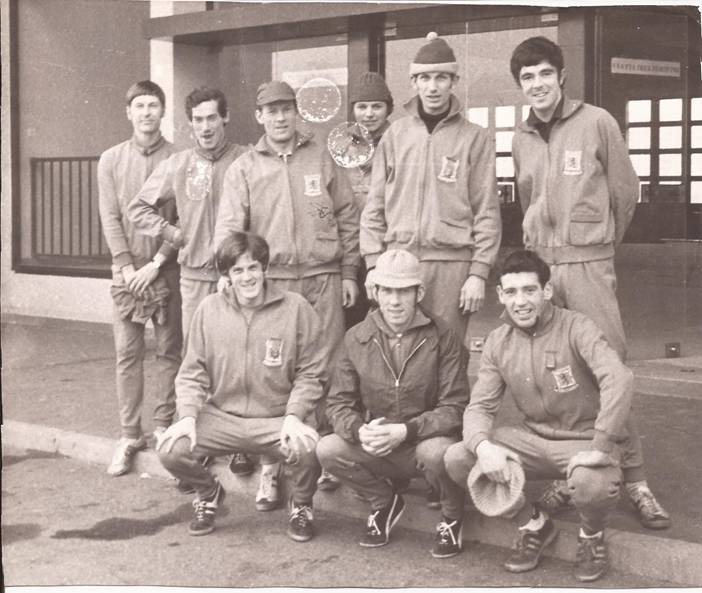
Adrian, back row, left, with the Scottish team in Vichy:
Adrian, Lachie Stewart, Bill Stoddart, Bill Mullett, Dick Wedlock, Gareth Bryan-Jones in the rear, Norman Morrison, Ian McCafferty and Jim Alder in front.
Thanks, Peter, for that lovely portrait of Adrian as a runner, as a man and as a friend. The last photograph is of Adrian with a really top class Scottish cross-country team, just one of the many occasions when he represented his country.
